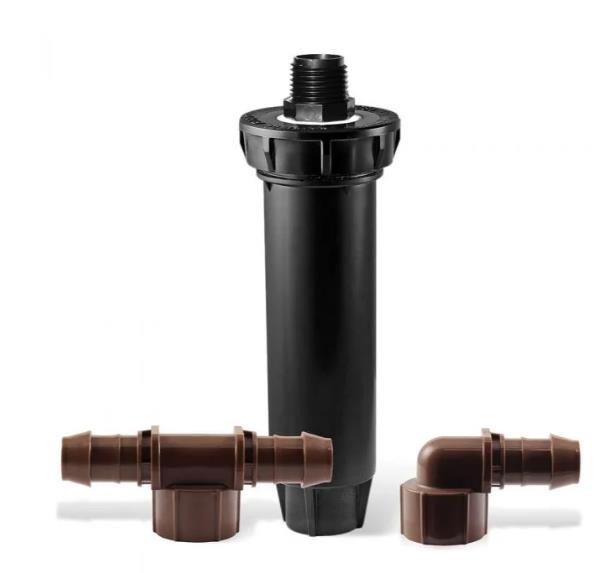Water-wise Landscape Ideas for Existing Landscapes

Landscapes requiring minimal irrigation while still providing all the functional benefits of conventional landscapes are water-wise landscapes. Utah is a climatically diverse state. According to Utah Climate Center, Northern Utah receives 10–12 inches more precipitation (water equivalent) than Southern Utah on an annual basis; however, a disproportionally high number of people live in Northern Utah. Nine out of the ten largest cities of Utah are in the north (Williams, 2021). On the other hand, while Southern Utah has a lower population, it also receives less precipitation, with a 1.5 to 2 times evapotranspiration rate compared to Northern Utah (Utah Climate Center, n.d.). In addition, the snowpack, which is the primary source of water, is declining. Therefore, now is the right time to convert our landscapes around the state to a more water-wise landscape.
Below, I present five easy ways to convert an existing landscape to a water-wise landscape without substantial renovation. These ideas are useful for people who would like to be waterwise but do not have the time, resources, or expertise to renovate the existing landscape completely.
1. Rainwater Harvesting

Photo provided by author
Utah law allows you to have two rain barrels, less than 100 gallons each, on your property (Figure 1). According to the last 10-year data from the Utah Climate Center, Northern Utah receives approximately 4 to 7 inches of water between May and October. For example, between 2018–2021, Logan received an average 5.67 inches of water during those months (Utah Climate Center, n.d.). A house with 1,000 square feet of roof surface will collect 3,500 gallons of water through that period, given you empty the container between rain events. A 200-square-foot shrub garden, depending upon the plant type and density, will need 250 gallons of water if watered to a 1-inch depth and irrigated two days a week. The collected water will meet water requirements for seven weeks. If you have water-wise plants, you will only need 0.5 inches of water two days a week. This water alone will provide water for three months. For more information on rain barrels, see the Utah State University Extension fact sheet on rain barrels.
2. Improving Soil Conditions
Soils with a high amount of sand cannot hold moisture. Also, soil with high clay particles has slow infiltration. Adding soil organic matter can increase soil water-holding capacity, resulting in the landscape retaining more water. A 1% to 2% increase in soil organic matter can increase soil water-holding capacity by 50 gallons in a 100-square-foot space. Therefore, irrigation amount and frequency can be reduced by adding organic matter, such as compost, to increase soil organic matter to 5%.
3. Irrigation Cycling
An 8-foot pop-up spray (360 degrees) head generally delivers four gallons of water per minute. A zone that is 8 by 16 feet will need four 90-degree and two 180-degree spray heads. If run for 20 minutes, the zone will apply 8 gallons of water per minute, totaling 160 gallons or 2 inches of water in that 8 by 16 area. The infiltration rate of clay soil is less than 0.2 inches per hour, and it is 0.8 inches per hour for sandy loam soil. Therefore, to reduce excessive runoff or leaching, apply irrigation based on infiltration rate or divide one 20-minute irrigation event into four 5-minute irrigation cycles.
4. Using Drip Irrigation for Non-turfs

Image used with permission from Rain Bird at store.rainbird.com.
Changing overhead irrigation to a drip line is not complicated (Figure 2). There are numerous videos on YouTube showing how to do the conversion. Shrubs and trees vary in their water requirements. Established shrubs in Northern Utah may need 0.75 inches of water per week, whereas large trees will need deep and slow irrigation to moisten the top 12 inches of the root zone. Using overhead irrigation does not allow users to change irrigation strategies for shrubs and trees. However, the drip irrigation system allows users to change irrigation quantity based on plant type by using an emitter with less flow rate for shrubs and a high flow rate or multiple emitters for trees. A drip irrigation system can use 50% to 80% less water compared to an overhead irrigation system.
5. Using Smart Controllers

Image source: Utah Water Savers at utahwatersavers.com/Program/6/smart-controller.
Smart controllers are devices that can track the evapotranspiration data of a specific location and customize the irrigation schedule based on evapotranspiration and rainfall (Figure 3). They are easy to install and use. Utah even has a rebate program to use or convert a traditional irrigation controller to a smart controller, with a $75 rebate available at this time (Utah Water Savers, 2022). Smart controllers water enough to replenish the user-defined percentage of water lost from the landscape, hence avoiding over-irrigating. A properly managed smart controller can save up to 50% of irrigation water compared to a traditional controller.
References
Utah Climate Center. (n.d.). Utah State University. https://climate.usu.edu/mchd/index.phpUtah Water Savers. (2022). Smart controller. Jordan Valley Water Conservancy District. http://utahwatersavers.com
Williams, C. (2021, August 13). Census data: Utah’s new top
10 most-populated cities—and other emerging places. KSL News. https://www.ksl.com/article/50223253/census-data-utahs-new-top-10-most-populated-cities--and-other-emerging-places
May 2022
Utah State University Extension
Authors
Shital Poudyal, Ornamental Horticulture Specialist


